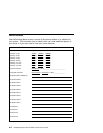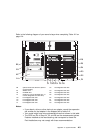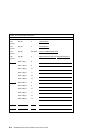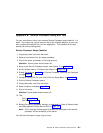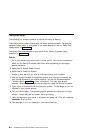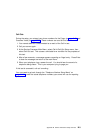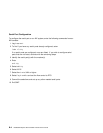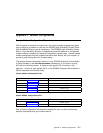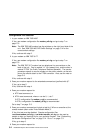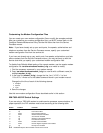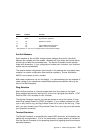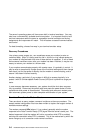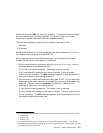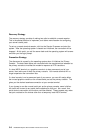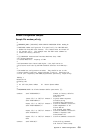
Configuration File Selection
1. Is your modem an IBM 7852-400?
If Yes, use modem configuration file modem_m0.cfg and go to step 7 on
page C-3.
Note: The IBM 7852-400 modem has dip switches on the right hand side of the
unit. See “IBM 7852-400 DIP Switch Settings” on page C-4 for the
correct switch settings.
If No, continue with step 2.
2. Is your modem an IBM 7857-017?
If Yes, use modem configuration file modem_m1.cfg and go to step 7 on
page C-3.
Note: The IBM 7857-017 modem has two telephone line connections on the
back of the unit. One is marked “LL” (for Leased Line), and the other is
marked “PTSN” (for Public Telephone Switched Network). The service
processor expects to use the modem on the public network, so the tele-
phone line should attach to the PTSN connector. Also, see the note on
page C-3.
If No, continue with step 3.
3. Does your modem respond to the extended command set (prefixed with &)?
If Yes, go to step 5.
If No, continue with step 4.
4. Does your modem respond to:
a. ATZ reset command, or
b. ATZn reset commands, where n can be 0, 1, etc.?
If ATZ, configuration file modem_z.cfg is recommended.
If ATZn, configuration file modem_z0.cfg is recommended.
Go to step 7 on page C-3.
5. Does your modem command set include a test for V.42 error correction at the
remote modem (often called “Auto-Reliable Mode”)?
If Yes, this test must be disabled. Sample configuration files
/usr/share/modem_m0.cfg or /usr/share/modem_m1.cfg can be used as
models to help you create a file for your particular modem. See “Customizing
the Modem Configuration Files” on page C-4. Go to 7 on page C-3.
If No, go to step 6.
6. Does your modem respond to:
C-2 RS/6000 Enterprise Server Model H Series User's Guide



